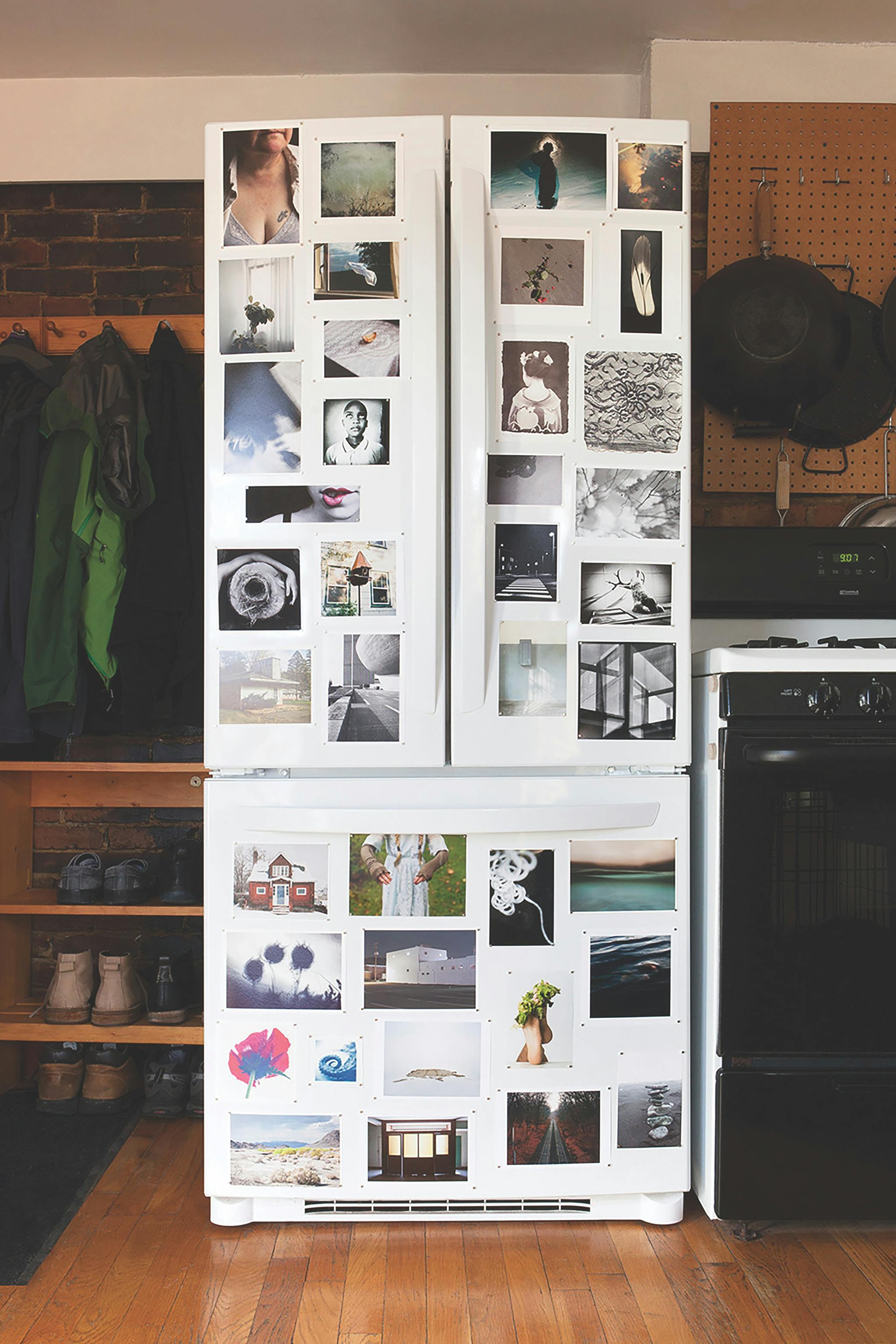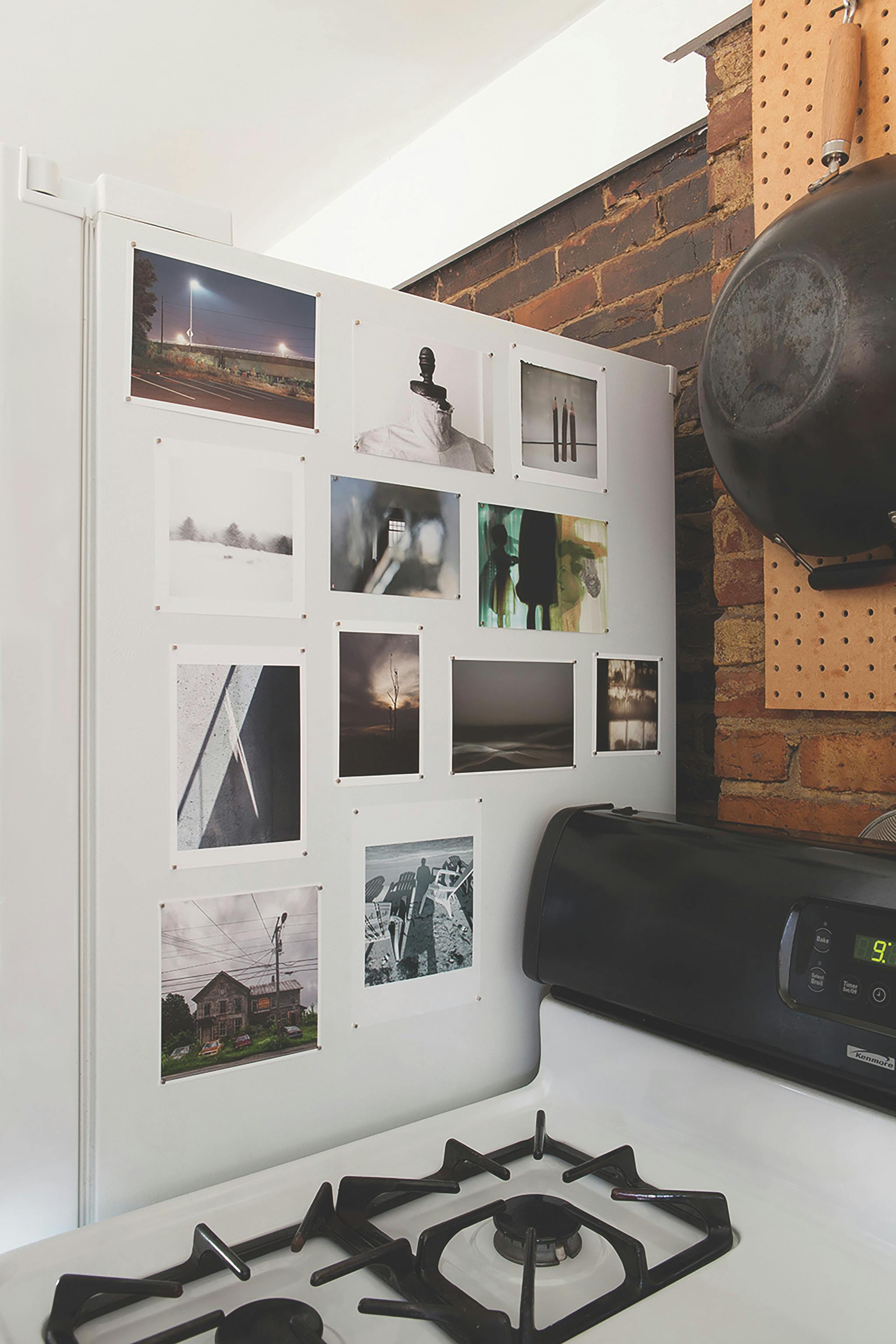This piece is adapted from Boston Art Review Issue 01: Notions of Place, now available in our store.
Yorgos Efthymiadis’ practice uses the materiality of space to investigate notions of citizenship, subjectivity, and belonging. Throughout his career as an image-maker, Yorgos Efthymiadis has sought to unearth the ways in which physical spaces both connect and divide the human experience. His ongoing photography series, “This Must Be the Place,” showcases Boston in an atypical fashion. Serene, yet captivating, Efthymiadis highlights line, form, and light in architecture to elevate the mundane; encouraging a second-look at what might otherwise be mistaken for ordinary.
The artist’s architectural photography series began in 2012 after Efthymiadis moved to Boston from Greece. Feeling a sense of displacement, his photographs of American suburbia served as testaments to the schism Efthymiadis experienced between the two cultures. Driveways, shuttered windows, and building tops allude to the humanity of the inhabited spaces without ever revealing a human form. Their emptiness is not eerie but familiar, like a quiet Sunday evening when everyone has already made their way indoors. Although Efthymiadis’ photographic practice in the States began from the perspective of the ‘visitor,’ the more time he spent with the sites he photographed, the more connected he became to his immediate environment. It was not long until Efthymiadis settled into his Somerville community, and even began to embrace it as his own.
Recently, Efthymiadis has expanded his practice to include experimental curation in the space of his home. His central platform? The refrigerator.
Each season, Efthymiadis invites a guest curator to utilize the space across his three-door refrigerator to showcase submitted photography and artwork from around the world. With each new exhibition, he opens his Somerville home to the constantly expanding community of Curated Fridge enthusiasts. You could say it’s a different kind of white cube.
Nearly three years later, the fridge has hosted over a dozen exhibitions and hundreds of artists. Yet despite its rapid growth, the transformation of the refrigerator was practically an accident. Efthymiadis explained, “One night after coming home from a photography portfolio review, I arranged the postcards and small flyers I had collected on my fridge. It was a better alternative to the bills that hung there before. I posted the photo on social media and was surprised by the praise that poured in. People suggested that the refrigerator space should take submissions, and even sent me magnets to support the cause.”
The use of the domestic space is more than convenient coincidence. It directly challenges ideas surrounding tradition, both familial and commercial. He asserts that, “Families are the first to curate the domestic space of ‘the fridge’ with their children’s artwork, carefully arranging drawings, paintings, and photos to celebrate the creative output of their kin.”
In so doing, Efthymiadis made the familiar strange while also reminding the artists selected for “exhibition” of the agency they always had. Removing the walls of the gallery, artists become free to distribute and share their work with the public, engaging with questions such as “Who decides what ‘gets shown’ on a gallery’s walls?” and “Does the curator wield more power to decide the value of a work than a proud parent in a kitchen space?” Questions of voice, power, authorship, and credibility are at the root of Efthymiadis’ practice.
While the original idea behind The Curated Fridge was to celebrate fine art photography and connect photographers around the world, along the road, a whole new idea was born. “What if we could use The Curated Fridge shows as a starting point and then break the gallery limits, making photography more accessible to a wider audience?”
Efthymiadis explains, “Through the free-of-charge submission calls, photographers get to put their work in front of the eyes of established and well-respected curators in the photographic world. In addition, the accepted images are shared via social media and the project’s dedicated website, promoting the work of the photographers while creating connections and long-lasting friendships between the artists.”
He explains that the submissions process is somewhat unconventional. “The photographers who apply have to mail their small prints to my house, because the guest curators base their choices on print quality as much as aesthetics. This is a unique experience for the curators, who usually sit behind a screen, judging shows by looking at .jpgs. Here, they get to touch the prints, feel the different paper, shift them around, and install them on the fridge.”
From a curatorial perspective, the refrigerator poses significant limitations to how the work can be grouped or displayed. In place of a linear gallery wall, the refrigerator presents a vertical, grid-like space from which the narrative must develop. Yet it is within this hierarchical questioning that new systems of curating, showing, and collecting art emerge. Nearly twenty-five years later, and Hans Ulrich Obrist’s first exhibition, “The Kitchen Show” (1991) is still regarded as a seminal moment in contemporary art history and the history of curation. With the Curated Fridge, Efthymiadis urges the public to challenge conventions of authority and viewership, while defying the confines of the domestic.
“Most importantly, The Curated Fridge has fostered a small community, bringing people together through art parties in my kitchen, where the curators talk about their choices and their vision, and the photographers share their work and discuss their latest projects,” Efthymiadis remarks. Just as every good party ends in the kitchen, Efthymiadis infuses a sense of congeniality into his project, welcoming artists, curators, and the viewer into a shared place of belonging.
For more on The Curated Fridge and Yorgos Efthymiadis’ work, visit thecuratedfridge.com.


